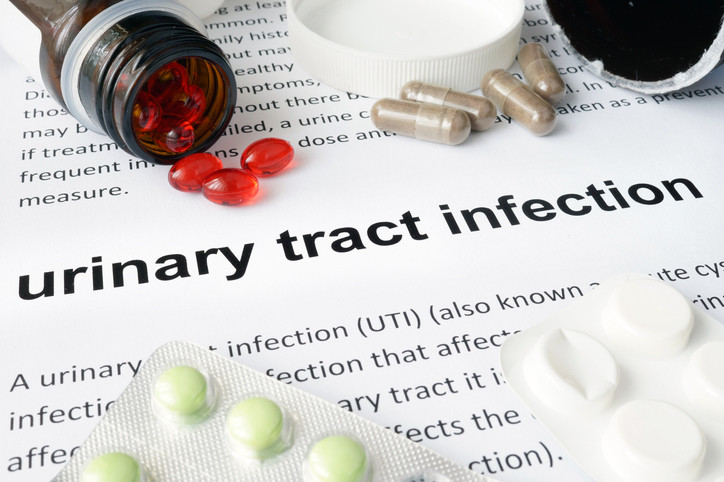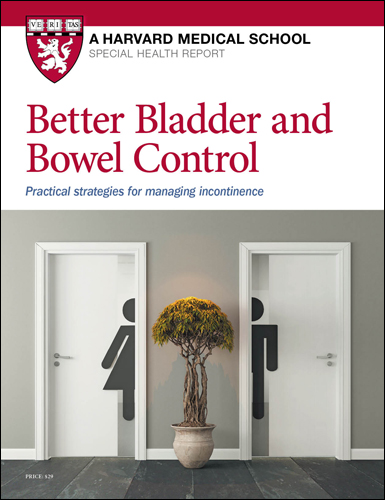Harvard Health Blog
Antibiotic-resistant urinary tract infections are on the rise

There is a global crisis of antibiotic resistance, and urinary tract infections (UTIs) may be the canary in the coal mine. UTIs are one of the most common types of infections; at least one in two women and one in 10 men will experience a UTI in their lifetime.
Like many human infections, UTIs are usually caused by bacteria living on or in our bodies, and require treatment with antibiotics. What’s alarming the medical community now is that UTIs are becoming ever harder to treat with common antibiotics.
Antibiotic overuse leads to antibiotic resistance
At some point, most people have taken a course of trimethoprim/sulfamethoxazole (Bactrim) or ciprofloxacin (Cipro), two common antibiotics used for UTIs. However, in the last few years it has become clear that the likelihood these antibiotics will kill most UTIs is dropping rapidly. You may have read the recent, frightening New York Times article reporting one in three uncomplicated UTIs in young healthy women are Bactrim-resistant and one in five are resistant to five other common antibiotics. Pretty scary, since we (the medical community) used to feel confident that writing a prescription for Bactrim was a sure recipe for cure.
How is it that we are losing the antibiotic war with bacteria? Though many things drive bacterial resistance, giving antibiotics to animals and antibiotic overuse in humans top the list.
We use a lot of antibiotics in humans — too much, and not always for the right reasons. When we prescribe antibiotics for viral illnesses like a cold, the flu, or common sinusitis, we create a massive shift in the body’s bacteria for no good reason (antibiotics are useless against viral infections).
Antibiotics can be lifesaving when needed. But when they aren’t needed, they kill good and bad bacteria alike, putting the body’s bacteria under intense pressure to survive. And, bacteria are real survivors! Under pressure, bacteria exchange genetic material and evolve, gaining survival traits like the ability to pump out, break down, or avoid antibiotics we want to use against them. Without antibiotic tools to kill them, these bacteria can attack us freely, and sometimes win.
Carefully targeted antibiotic treatment for urinary tract infections
So what do we do now? As a society and as individuals, we should reduce and carefully target antibiotic use. Both physicians and patients should be aware of the grave potential to lose effective antibiotics for all infections — even simple UTIs. It’s an opportunity that empowers individuals to have informed conversations with their doctors. Every time your doctor prescribes an antibiotic, ask: Do I need this? Why? Is there an antibiotic-free alternative? Talking about it might be enough to meaningfully reduce inappropriate antibiotic use.
If you’re having UTI symptoms like burning with urination, more frequent urination, bloody or cloudy urine, low abdominal pain, or fever, you should see a medical provider to get tested. You’ll have to urinate into a container and the medical office will test for products of bacterial metabolism. Make sure to tell your provider if you’ve had UTIs before, and what antibiotic you took. If you have a history of antibiotic-resistant infections, share that, too. There are alternatives to Cipro and Bactrim, but antibiotic choices are limited.
If you’re diagnosed with a UTI, your provider may prescribe an antibiotic without additional testing. Or, they might do a urine culture to test the bacteria against specific antibiotics before deciding which one to prescribe. This will become more common as antibiotic resistance increases. Antibiotic testing involves growing a sample of urine in a petri dish, finding the bacteria causing infection, and testing them against a range of antibiotics to see which ones kill the bacteria best. This process takes time and money, but it’s important to get the right treatment for your infection. While you wait for the results, taking over-the-counter analgesics like acetaminophen or ibuprofen and drinking more water can help to relieve UTI pain and discomfort.
If antibiotic resistance continues to grow, more people will need intravenous treatment for UTIs we used to cure with simple oral antibiotic courses. We’re also likely to see more complications, like kidney infections and sepsis, arising from ineffective treatment.
An ounce of prevention
Unfortunately, most UTIs are not completely preventable, and are caused by differences in the structure or function of the urinary tract and immune system. But there are things you can do to keep healthy. For example, stay hydrated to increase urine production and flush out unwanted bacterial intruders. Good hygiene is also important, but scrubbing away at delicate genital tissues can damage them and create portals for bacteria. Clean your genital area gently with mild soap and water. Postmenopausal women may benefit from vaginal estrogen cream. Finally, eating cranberries and urinating after having sex haven’t been proven to have major benefits, but aren’t likely to hurt, either.
Follow me on Twitter @lisa_xpond
About the Author

Lisa Bebell, MD, Contributor
Disclaimer:
As a service to our readers, Harvard Health Publishing provides access to our library of archived content. Please note the date of last review or update on all articles.
No content on this site, regardless of date, should ever be used as a substitute for direct medical advice from your doctor or other qualified clinician.
















